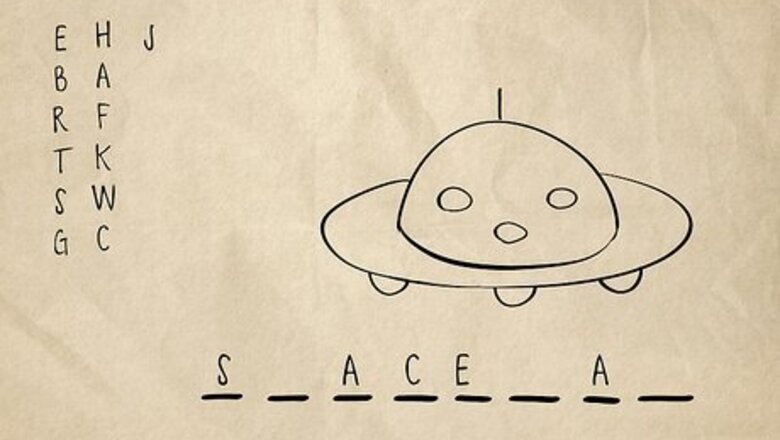
views
Spaceman

In this variation on playing classic Hangman, one player thinks of a word and writes a dash for each letter on a piece of paper. Other players take turns guessing letters. If they guess correctly, the letter gets written on the corresponding dash. If they guess incorrectly, the letter is written somewhere else on the page, and a part of a spaceman (or astronaut) is drawn on the paper. If the players can guess the word before the spaceman drawing is complete, they win! Other variations on Hangman include Snowman and Apple Tree. Snowman follows the same rules as Spaceman, except the lead player draws a snowman instead of an astronaut. In Apple Tree, an apple tree is drawn with 10 apples. If players guess the wrong letter, it is written in one of the apples. The game ends when the apple tree is full of letters!
Dots and Boxes
Draw a rectangular grid of dots on a piece of paper. A 3x3 grid is a good place to start for beginner players. The two players take turns drawing a line between two adjacent dots. Their line can be horizontal or vertical, but they cannot connect two dots that are at a diagonal. When a player completes the fourth side of a square or box, they write their initials in that box. They can then draw another line. The game ends when all boxes have been completed or “claimed” with a player’s initials. Whoever has claimed the most boxes is the winner!
Battleship
Draw two equally-sized boxes of 10 squares by 10 squares. On the top of each grid, label each column with numbers 1-10. On the left side of each grid, label each row with letters A-J. In their respective grid, each player should secretly draw where they want to place their five ships: aircraft carrier (5 squares), destroyer (1 square), battleship (4 squares), cruiser (3 squares) and submarine (2 squares). Ships can be positioned horizontally or vertically, but not diagonally. Once all ships have been placed, the first player can guess where their opponent put their ships by naming a coordinate, e.g. “A5,” “J9,” or “D1.” The other player then declares whether that coordinate “hit” or “missed” their ship. If a ship is hit, cross out that coordinate box. Once every box of a ship has been hit, the ship is sunk. Play continues this way, with players taking turns giving coordinates. The game ends when one player has lost all their ships, making the other player the winner.
Join 5
Draw a 4x4 square of equidistant dots, with a 4x3 rectangle of dots added to each side. The resulting shape should resemble an X or a plus sign. Each player takes turns drawing a straight line through the dots that’s exactly 5 dots long. The new line cannot retrace any part of a previously drawn line, and exactly one of the five dots must be a new dot that wasn’t originally part of the grid. The game ends when no more lines or segments can be drawn. While you can play this game on plain printer paper, it may be easier to visualize the dots if you use dot graph paper. This game can be played alone or in pairs!
Mastermind
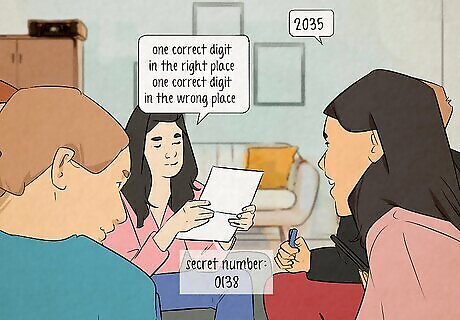
Choose one player to be the “Mastermind” and have them write down a secret 4-digit number. Players take turns guessing the numbers and the Mastermind will tell them how many digits are correct and in the right place and how many digits are correct but in the wrong position. Players continue guessing until they discover the secret number. For example, suppose the secret number is “0138,” and a player guesses “2035.” The Mastermind would say that they have one correct digit that's in the right place (“3”), and one correct digit that's in the wrong place (“0”). The Mastermind doesn’t have to tell the players what the number values actually are. To increase this game's difficulty level, limit the number of guesses the players have.
Paper Soccer
Draw a rectangle on a piece of graph paper. The rectangle should resemble a soccer field. Draw very small rectangles on each short side to resemble “goals.” Draw a dot (the “soccer ball”) in the middle of the paper. On each turn, a player can draw a line segment from the dot’s current position to the next intersection on the graph paper. This action is equivalent to moving or “kicking” the soccer ball. Players cannot free draw lines—they must draw along the edge or diagonal of a square on the graph paper. They can cross existing diagonals, but they cannot draw directly over a line that’s already been drawn. If the ball reaches an intersection for the first time, the ball stops there and the next player takes their turn. If the ball has been at that intersection before or hits the field boundary, the ball bounces and the player must take another turn and draw another line. This continues until the ball reaches an intersection it’s never been at before. If the ball reaches the back edge of a player’s “goal,” their opponent wins a point and the ball returns to the center of the field. The game is won by whichever player is the first to score 3 points.
Ultimate Tic-Tac-Toe
Draw a large 3x3 tic-tac-toe board and then draw smaller boards inside each of the larger squares. There should be nine mini-boards total, nested inside one mega-board. Assign each player as Xs and Os. Ask the X player to place their X anywhere on the mega-board. The X player’s choice affects where the O player can put their O. For example, say the X chose the top left mini-board and placed their X in the bottom-right corner of that board. The O player must then place their O in the bottom-right mini-board, but they can place their O anywhere on that board. If they place it in the center of the mini-board, the X must use the center mini-board for their next turn. When a row is completed on any mini-board, the winner claims that square on the mega-board by drawing a large X or O through it. Play continues until someone claims three mini-boards that form a line.
SOS
To play SOS on paper, draw a grid of any size. Ask players to take turns writing “S” or “O” in any square on the grid. If a player makes “S-O-S” all in a row, they get to highlight the sequence in their chosen color and take another turn. The game ends when the grid is full. Whoever has the most “SOS” sequences is the winner!
Got Your Back
Each player has a piece of paper and a writing utensil. One player places their piece of paper on another player’s back and draws something on the page. The other player tries to guess what the first player drew by drawing it on their own paper. When they’re done, compare the pages to see how close they got! This game is great for small groups. Everyone can play at once by standing in a line or circle and drawing on the back of the person in front of them.
Pictionary
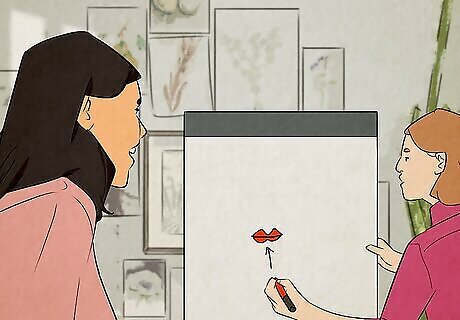
In Pictionary, each player takes turns drawing a word or phrase. Their teammates have a certain amount of time, usually 1-2 minutes, to guess what they’re drawing. The player who’s drawing is not allowed to use any letters or numbers in their picture. Have everyone write down a prompt on a piece of paper and put it in a bowl or hat to pick from on each turn. Alternatively, you can use an online Pictionary word generator to find things to draw!
Telephone Pictionary
Give each player a piece of paper and ask them to write a random sentence or phrase. They then pass the paper to the player next to them, who reads the sentence and folds the paper to hide the phrase. Under the fold, they draw a picture or visual representing the phrase. The papers are passed again, and the next player will fold over the visual and write a sentence that describes it. This process continues, alternating between writing and drawing until the game ends and the original phrase is revealed. The game can end when the paper is full, or you can choose to set a timer and end the game whenever the timer is up.
Secret Artwork
Give each player a piece of paper and ask them to draw a small part of any random picture at the top of the page. When everyone’s finished drawing, each player should fold over their paper just enough to cover their drawing. Then, they pass their paper onto the next player. On each turn, players add a new doodle or drawing to the paper before folding the paper to hide their addition and passing to the next player. Continue this process of adding drawings and passing papers along until the papers are filled or a 5-minute timer is up. Unfold the papers to reveal your top-secret masterpieces!
Finish the Doodle
Draw a random doodle on a piece of paper. Pass the paper to another player, who then uses the doodle to create a complete picture. You can also take turns drawing different parts of the picture until you feel like it’s complete. This game can be played with multiple people or as a solo activity!
Finish the Story
Have one person write a beginning sentence of a story on a piece of paper. They hand the paper to the next player, who continues that sentence or writes the next one. Before passing to the third player, they fold the paper so only the most recent sentence is visible. Play continues until the paper is full. Or, you can set a timer to an agreed upon amount of minutes before the game begins, and end the game when the timer goes off. Read the story as a group and see what silly plotline you created together! If you’re stuck getting started, try “Once upon a time, there was a ____.”
Word Chains

Sit in a circle or designate a turn-taking order among your players. Have the first player say a word. The next player must say a word that starts with the ending letter of the previous word. If the first player said “apricot,” for instance, the next player’s word must start with the letter t. The game continues in this chain pattern until a player hesitates, makes an error, or cannot think of a word. You can end the game there or eliminate players until only one is left as the victor. This game is more fun (and more challenging!) if you pick a category that all the words must belong to, like foods, countries, animals, or anything you can think of. You could play this game completely verbally. Or, you can write the words down on paper to play quietly or keep track of how each word connects to the next.
Categories
Make a list of four categories and randomly select a letter. Set a timer for two minutes. During that time, brainstorm and write down as many words in those categories that start with your chosen letter. When time is up, read off the words each player came up with and cross out any that multiple players used. The player with the most remaining words is the winner! For example, suppose the letter was “B” and the categories were “Girl Name,” “Capital City,” “Pasta Shape,” and “Superheroes.” Possible responses for this game could be “Barbara,” “Bogotá,” “Bucatini,” and “Batman.”
Unscramble
Write a list of 10 words but scramble up the letters in each word. Challenge the other players to unscramble the words in 30-60 seconds or less. The first player to unscramble all the words wins! You can also choose words that all belong to a single category. Get started on your first three rounds with these examples: Pizza Toppings: epnpoeipr (pepperoni), usmmorsho (mushrooms), hma (ham), inlppaeep (pineapple), oislev (olives), tmoota (tomato), ceehse (cheese), augsesa (sausage), ergen epppre (green pepper), oisnno (onions). Mythological Creatures: ycpcslo (cyclops), roge (ogre), erulacnphe (leprechaun), menog (gnome), blinog (goblin), aiefsri (fairies), dmeiarm (mermaid), ncnroiu (unicorn), enucrta (centaur), ewlewfor (werewolf). Spanish-Speaking Countries: aemuaaltg (Guatemala), oabomcil (Colombia), isnpa (Spain), dhaousrn (Honduras), bcua (Cuba), manpaa (Panama), auryguu (Uruguay), eatirnagn (Argentina), ezueanlev (Venezuela), cixmoe (Mexico).
Pangrams
Give each player five minutes to write their own pangram, which is a sentence that uses every letter in the English alphabet. You use the same letter more than once, but you must use each letter at least once. The most popular example of a pangram is "the quick brown fox jumps over a lazy dog.” Set additional rules for winning, like whoever comes up with the shortest, funniest, or most logical pangram sentence.
Words Within A Word
Write a long word on a piece of paper and set a timer for 3-5 minutes. During the time allotted, players must write down as many small words as possible that can be made using only the letters from the longer word. Using the word “rollercoaster” as an example, you could make smaller words like “role,” “star,” or “coat.”
Nim
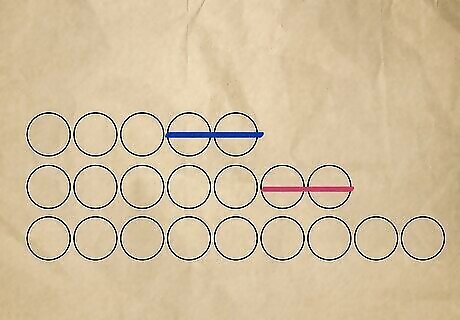
Draw three rows of circles on a piece of paper. The rows should be stacked on top of each other, with the top row having 5 circles, the middle having 7, and the bottom one having 9. On each turn, a player must choose one row to erase or cross out a circle from. They must remove at least one circle from their chosen row, but they can remove any number up to the entire row. Eventually, no one will be able to move or cross out any more circles. When no more moves are possible, the game ends and the last player who was able to move is the winner. This game should be played with exactly two players. This game is a paper adaptation of the original Nim game, for which you usually need coins or tokens.
Sim
Draw six points on a piece of paper. The points should form the general shape of a regular hexagon. Each player takes turns drawing lines to connect two points on the paper. Their goal is to not make a triangle with three of their line segments. The person who makes the first triangle loses. This game should be played with exactly two players.
Sprouts
The goal of Sprouts is to be the last player who can draw a line without intersecting any others. Start by drawing 2-6 dots anywhere on a piece of paper. The first player draws a line from one dot to another. The line can be straight or curved, and it can even start and end on the same dot. The player’s turn ends by placing another dot somewhere on their line. Each player takes their turn, following these same rules. However, no lines can cross or intersect. Additionally, each dot can only have up to 3 lines connecting to it. When one of the players cannot create any new lines, the game is over, and the most recent player wins!
Bridges
Draw an abstract shape and use lines to divide it into 30-50 random sections. On their turn, each player should use a different color to build a bridge that starts in one section, crosses a second, and ends in a third. Players cannot start or end their bridge or cross a section that’s already been used. This process of play continues until no bridges can be built. The last player who can build a bridge is the winner!
Balderdash
Assign one player to be the gamemaster and have them come up with a list of strange real words that few people would know the definition of. In each round, the other players will secretly write down a fake definition for that word and pass it to the gamemaster. The gamemaster will then read all the definitions, including the real ones, and players can vote for whichever they think is the real one. Players get a point for every person who votes for their fake definition. For example, a pogonophile is someone who deeply loves beards, but fake definitions could include anything from “someone who collects pogo sticks” to “a type of daisy native to Southern England.” Get started with a Balderdash word list.
Beetle
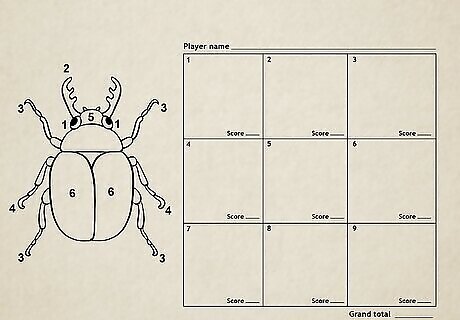
Draw a simple beetle on a piece of paper and assign a number to each part. For example, 1 for the body, 2 for the head, 3 for the limbs, 4 for the wings, 5 for the antennae, and 6 for the eyes. Each player takes turns rolling a die and drawing the corresponding body part of the beetle on their personal piece of paper. The first player to complete the beetle wins! You can use any animal or object for this game. Try drawing a cartoon butterfly or draw a cartoon character like Minnie Mouse! This game requires a die to play, in addition to a pen and paper. If you don’t have a die, however, you can use a virtual dice roller or draw numbers out of a hat.
M.A.S.H
Draw a chart on a piece of paper with at least four columns. Write “MASH” at the top of the paper, which stands for “mansion, apartment, shack, and house.” At the top of each column, write a category that has to do with your future life, like “Spouse,” “Career,” “Number of Kids,” or “Where you’ll live.” List at least four options in each category, like “dog,” “rhino,” “parrot,” and “unicorn” for a “Pet” category. Randomly choose a number by rolling a dice or drawing random dots on the page and then counting them. Starting at the “M” in “MASH,” use your number to count through the categories and options from left to right. Cross off whichever option you land on. When only one option is left in a category, you can circle it and skip that category from now on. Continue until only one option is left in each category, and your future life is completely predicted!
Charades
Divide your group into two teams and hand out blank slips of paper to each player. Everyone should write different words or phrases on their paper, like a book or song title, celebrity name, or any random object that most people would be familiar with. Place all the paper slips in a box or bowl. On alternating turns, one person draws a paper slip from the bowl and acts out the phrase for their teammates to guess. If the team guesses correctly, they win a point! If a 3-minute timer passes before they guess correctly, they lose the round. The player acting out the word or phrase cannot speak, draw, or hum.
Who Am I?
Write a bunch of famous people’s names on as many sticky notes as you have players. Place one of the sticky notes on each player’s forehead without them seeing the name on it. Each player has to guess the name of the person on their forehead by asking simple “yes” or “no” questions. Once they guess correctly, they win the round and can continue answering questions while others continue playing. Some good questions to ask might be, “Am I male?,” “Am I an actor?,” “Am I a historical figure?,” or “Am I currently alive?”
Mafia
To start playing Mafia, you need as many slips of paper as you have players. Write a different role on each slip of paper: you need at least two “Mafiosi,” and the remaining people will be townspeople. Each player, except the gamemaster, draws a paper slip and secretly reads their role. The game is played in alternating rounds: the night and the day. During the night, the Mafiosi wake up while everyone else is sleeping and “murder” one of the innocents. The Mafiosi must unanimously agree on someone to murder, but they have to do so silently so as not to wake or alert the “sleeping” townspeople. During the day, everyone wakes up, and the gamemaster announces who the Mafiosi have decided to murder. The townspeople then try to find the perpetrator. During each “day,” they can vote out someone who they think is a Mafiosi. The game continues until all Mafiosi are eliminated or they outnumber the townspeople. This game is best played with large groups of seven or more people.
Read My Lips
Write several words or phrases on different slips of paper and place them in a bowl. Have one player put on headphones with loud music so they can’t hear anything else in the room. Each of the remaining players will draw a phrase from the bowl and read it aloud. The person with the headphones on will try to lip-read what their teammates say. Once a 2-3 minute time limit has passed, count how many words the lip-reader guessed correctly. This game can be played collaboratively as a group or as two competing teams.
Jet Planes
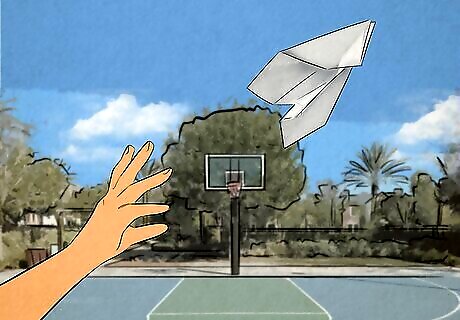
Make a paper airplane or make several in different styles. Compete against yourself and see the farthest you can make a paper airplane fly. Or, play against some friends and see who can make the farthest-flying aircraft. Make a simple paper airplane by folding a standard sheet of paper vertically down the center, then unfold the paper and fold each top corner into the center line. Then, fold the plane in half toward you, and fold the wings down so the top edges align with the bottom edge of the body. To make this paper plane more secure, add double stick tape to the inside of the body, although this isn’t required. Make the competition extra fun by decorating your airplanes with doodles or stickers.


















Comments
0 comment